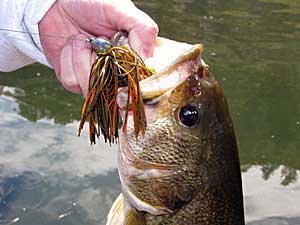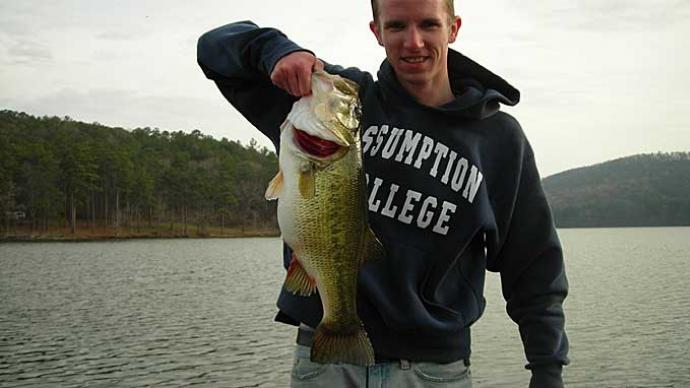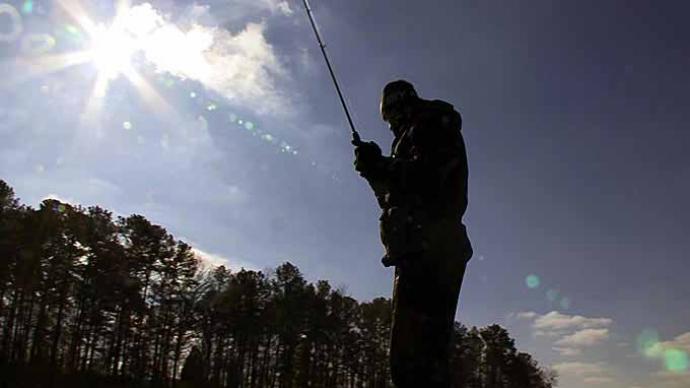
A problem facing today’s anglers is the indignant behavior bass develop when confronted with heavy fishing pressure.
Unquestionably, a constant bombardment of lures and steady boat traffic can quickly ruin a hungry bass’s appetite. Tournament anglers deal with this problem regularly. It is perhaps more severe in the Midwest and Northeast, where bass-fishing waters are not as numerous, and a small lake quickly attracts many anglers.
Under normal conditions, bass feed along the edges of brush and grass beds where, feeling secure and aggressive, they take liberties. But, when lures begin crashing about them, they are far more defensive. Bass see humans as predators, and safety gets priority over eating.
Nevertheless, these wary bass will bite. They still can be caught by easing a lure into their safety zone and coaxing them to take it. As always, accurate casts, patience and subtle presentations pay off.
When heavy cover is nearby, bass simply move closer to it. Small, inexperienced fish in pursuit of bait might wander away from cover, but, in most cases, the angler must outfox the bigger, wiser bass. Where there isn’t much cover, he must change tactics. That’s when I opt for smaller lures and lighter line.
Anglers often mistakenly believe that aggressive fish, once disturbed, have left the area. That’s not always true. Actually, there may be a catchable school in the area.
To cite a personal example: When I won a tournament on Truman Lake, I caught numerous bass from a creek the first day by fan-casting a spinnerbait. After that, the fish got spooky - even though I was the only one fishing the creek.
Catching fish became more difficult each day, so I slowed down, being more precise with each cast. I bumped the bark and tickled the trees with the spinnerbait, making sure the first cast was the best. The attention to detail reduced my number of casts, but the fish-catching results were worth it.
Normally, I like to flip or pitch a worm at spooky bass, because I can place it quietly in those difficult-to-reach places - where bass feel secure and most anglers can’t reach. My spooked-bass presentation means I must fish the water inches at a time, never assuming one flip or cast is good and going to pull fish to my bait.
That’s not to say one technique is the ticket. You may have to change presentations to the same school of fish within the duration of one day.
A few years ago, while working a grass bed at Lake Guntersville, I caught fish in the early morning on a buzzbait. Shortly after the sun came up, I had to go with a Berkley Flicker Shad. After an hour, I switched to flipping a 10-inch Berkley Power Worm into heavy grass. My pressure, and bright sunlight, pushed the fish deeper into weeds, yet I caught fish each time I changed tactics. It was a lot easier, believe me, than running around the lake hunting for new areas.
Fish have a tendency to become defensive, so they won’t bite. If this happens, simply leave the particular hole. In a sense, it’s like turkey hunting: Why keep calling the ol’ bird that’s been shot at several times when you can find others more cooperative?
Deeper water can provide a good alternative, especially on lakes where productive shallows take a thrashing. Deep structure doesn’t receive as much pressure, so these fish are likely to be more vulnerable.
Of course, the best solution is to avoid heavy-pressured lakes on weekends and fish them at midweek or after dark. It’s amazing how productive a lake can be once the bass have had a chance to recover from a long summer weekend.
For more articles, quick tips and much more visit HankParker.com.




